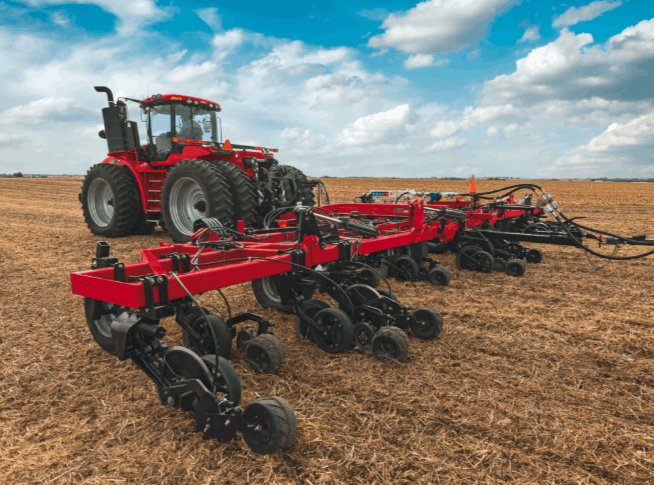Case IH is excited to offer producers and commercial applicators a new High-speed Low Disturbance (HSLD) coulter option for the Nutri-Placer 930 fertilizer applicator. Capable of speeds up to 11 mph, operators can cover 510 acres in a 12-hour day¹ for increased productivity, lower tractor hours and reduced fuel consumption.
According to Dave Long, Case IH Pull-type Fertilizer Applicators Marketing Manager, extensive field tests prove the toolbar’s increased efficiency is matched with superior agronomic performance.
“The Nutri-Placer 930 HSLD provided better residue cover, significantly fewer clods and reduced lateral soil movement compared to other coulter-style applicators available,” Long said. “This ideal seedbed finish is essential for preserving valuable ground cover in highly erodible land and heavy, no-till corn conditions.”

The key to producing that uniform field finish is the new 22.6-inch single-coulter-blade design. It effectively cuts through residue with minimal disturbance, leading to improved soil and moisture retention that helps properly seal nutrients and reduce run-off. Because of its ability to provide better residue cover in tough, fast-changing conditions, the Nutri-Placer 930 HSLD keeps operators in the field during fall, preplant and side-dress applications for greater return on investment.
“The Nutri-Placer 930 HSLD will not only help operators meet their productivity goals, but also lessen their environmental impact by minimizing field nutrient loss and maximizing crop uptake,” Long said, adding that Case IH is a proud partner of the 4R Nutrient Stewardship initiative.
An enhanced row unit built for High-Efficiency Farming
From the coulter to the closing system, cast-iron components, reduced maintenance and Agronomic Design™ that yields results are found in every component of the enhanced Nutri-Placer 930 HSLD row unit:
- 22.6-inch single coulter: Cuts through residue with minimal soil disturbance and reduced plugging at speeds up to 11 mph. A 4-degree blade angle opens a precise slot for accurate nutrient placement.
- Cast-iron knife: The spring-loaded knife features carbide inserts for extended wear and protection of fertilizer tubes. A separately replaceable Beaver Tail design with tungsten carbide weld aids in nutrient sealing.
- Wiper wheel: In addition to holding soil in place while the coulter opens a slot, the wiper wheel eliminates soil and residue build up on the coulter blade.
- Closing system: The SharkTooth® blade and walking tandem press wheel firm the soil as the Nutri-Placer runs through the field. No-tools-required spring down force pressure and pivot range adjustments make changes quick and easy.
Additional new features to enhance productivity with the Nutri-Placer 930 HSLD include:
- Radial tires: Handle higher loads and float over rough terrain with reduced compaction.
- LED lighting: Bright lights provide safe, reliable transport for long days in the field.
- Weight kits: Available weight kits help customize the toolbar to each operation’s unique field conditions.
Source : Case IH